
Cheap Flights From Lhasa Gonggar Airport (LXA), Airport in China
Need inspiration? Search for flights to anywhere
Register to Use Your Coupon
Diskon 8% Hotel
Diskon s.d 8% Xperience
Diskon 12% Antar Jemput Bandara
Diskon 10% Rental Mobil
Domestic Flight Best Deals for You ✈️
International Flight Best Deals!🌏
Read on and kickstart your adventure
Frequently Asked Question
-
1. Domestic Flights: Arrive at least 2 hours before departure.
2. International Flights: Arrive at least 3 hours before departure.
3. Additional Considerations: Check with your airline for specific recommendations as times can vary depending on the airport and travel season.
-
1. Boarding Pass: Your gate number is usually printed on your boarding pass.
2. Airport Monitors: Check the flight information display screens located throughout the airport.
3. Mobile Apps: Use your airline’s mobile app for real-time updates on gate information.
4. Airport Staff: Ask airport staff for assistance if you’re unsure.
-
1. Varies by Airport: Most major airports operate 24/7, but smaller airports might have limited hours.
2. Check Online: Visit the airport’s official website for specific operating hours.
3. Customer Service: Call the airport’s customer service for up-to-date information.
-
1. Common Availability: Yes, most airports offer free Wi-Fi.
2. Access Instructions: Look for Wi-Fi signs around the terminal or check the airport’s website for access instructions.
3. Premium Services: Some airports offer paid premium Wi-Fi options for faster speeds.
-
1. Liquids over 3.4 ounces (100 milliliters).
2. Sharp objects (e.g., knives, scissors).
3. Flammable items (e.g., lighter fluid, fireworks).
4. Sporting goods (e.g., baseball bats, ski poles).
5. Tools (e.g., hammers, wrenches).
-
1. Government-issued photo ID (e.g., driver’s license, passport).
2. Boarding pass (either printed or digital).
-
1. Valid passport.
2. Visa (if required for your destination)
3. Boarding pass.
-
1. Availability: Yes, most international airports have duty-free shops.
2. Location: Typically located in the international departures area after security.
3. Operating Hours: Check the airport’s website for specific store hours.
-
1. Common Availability: Yes, most modern airports provide charging stations.
2. Locations: Look for charging kiosks or outlets near seating areas, gates, and lounges.
3. Airport Maps: Refer to airport maps or ask airport staff for locations of charging stations.
Cheap Flights From Lhasa Gonggar Airport (LXA), Airport in China
Basic Information About Lhasa Gonggar Airport (LXA)
Lhasa Gonggar Airport (LXA) is the primary airport serving Lhasa, the capital of Tibet. Located about 62 kilometers from the city center, it sits at an elevation of 3,570 meters (11,713 feet), making it one of the highest airports in the world. Opened in 1965, LXA has undergone several upgrades to accommodate increasing passenger traffic and modern aircraft. The airport features a single terminal that handles both domestic and international flights, connecting travelers to major cities in China and beyond.
Why Taking Flight from Lhasa Gonggar Airport (LXA) is the Best Choice
Flying from Lhasa Gonggar Airport is a unique experience that offers breathtaking views of the Himalayan landscape. The airport serves as a gateway to Tibet, allowing travelers to immerse themselves in the region's rich culture and stunning natural beauty. With direct flights to key destinations, including Beijing, Chengdu, and Kathmandu, LXA provides convenient access to both urban and remote areas. Additionally, the airport's high altitude means you can start your adventure in the heart of the Tibetan plateau right away!
What is Preparation if We are Taking a Flight from Lhasa Gonggar Airport (LXA)
Preparation is key for a smooth journey from Lhasa Gonggar Airport. First, ensure you have all necessary travel documents, including your passport and any required permits for entering Tibet. Arrive at the airport at least two hours before your flight to allow time for check-in and security procedures. Due to the high altitude, it's advisable to stay hydrated and avoid heavy meals before your flight. Lastly, pack essentials like snacks, a light jacket, and entertainment to make your wait more comfortable.
Basic Airport Facilities and Services in Lhasa Gonggar Airport (LXA)
Lhasa Gonggar Airport offers a range of facilities to enhance your travel experience. The terminal features comfortable waiting areas, shops selling local handicrafts and souvenirs, and dining options that showcase Tibetan cuisine. Free Wi-Fi is available throughout the airport, allowing you to stay connected. Additionally, there are ATMs and currency exchange services for your convenience. If you need assistance, the airport staff is friendly and ready to help with any inquiries.
Public Transportation Options at Lhasa Gonggar Airport (LXA)
Getting to and from Lhasa Gonggar Airport is easy with various public transportation options. The most common choice is the airport shuttle bus, which connects the airport to Lhasa city center and major hotels. Taxis are also readily available outside the terminal, providing a more direct and private mode of transport. For those looking to explore the surrounding areas, consider renting a car or arranging a private transfer in advance. Whichever option you choose, you'll find the journey to be scenic and enjoyable.
Travel Tips and Guides Around Lhasa Gonggar Airport (LXA)
When traveling around Lhasa Gonggar Airport, keep these tips in mind for a hassle-free experience. First, acclimatize to the high altitude by taking it easy for the first few days in Lhasa. Drink plenty of water and avoid strenuous activities. Familiarize yourself with local customs and etiquette to enhance your interactions with the Tibetan people. If you're planning to explore the region, consider joining guided tours to ensure you don't miss out on key attractions. Lastly, always have a power bank handy, as charging stations may be limited in some areas.
Basic Information About Lhasa Gonggar Airport (LXA)
Lhasa Gonggar Airport (LXA) is the primary airport serving Lhasa, the capital of Tibet. Located about 62 kilometers from the city center, it sits at an elevation of 3,570 meters (11,713 feet), making it one of the highest airports in the world. Opened in 1965, LXA has undergone several upgrades to accommodate increasing passenger traffic and modern aircraft. The airport features a single terminal that handles both domestic and international flights, connecting travelers to major cities in China and beyond.
Why Taking Flight from Lhasa Gonggar Airport (LXA) is the Best Choice
Flying from Lhasa Gonggar Airport is a unique experience that offers breathtaking views of the Himalayan landscape. The airport serves as a gateway to Tibet, allowing travelers to immerse themselves in the region's rich culture and stunning natural beauty. With direct flights to key destinations, including Beijing, Chengdu, and Kathmandu, LXA provides convenient access to both urban and remote areas. Additionally, the airport's high altitude means you can start your adventure in the heart of the Tibetan plateau right away!
What is Preparation if We are Taking a Flight from Lhasa Gonggar Airport (LXA)
Preparation is key for a smooth journey from Lhasa Gonggar Airport. First, ensure you have all necessary travel documents, including your passport and any required permits for entering Tibet. Arrive at the airport at least two hours before your flight to allow time for check-in and security procedures. Due to the high altitude, it's advisable to stay hydrated and avoid heavy meals before your flight. Lastly, pack essentials like snacks, a light jacket, and entertainment to make your wait more comfortable.
Basic Airport Facilities and Services in Lhasa Gonggar Airport (LXA)
Lhasa Gonggar Airport offers a range of facilities to enhance your travel experience. The terminal features comfortable waiting areas, shops selling local handicrafts and souvenirs, and dining options that showcase Tibetan cuisine. Free Wi-Fi is available throughout the airport, allowing you to stay connected. Additionally, there are ATMs and currency exchange services for your convenience. If you need assistance, the airport staff is friendly and ready to help with any inquiries.
Public Transportation Options at Lhasa Gonggar Airport (LXA)
Getting to and from Lhasa Gonggar Airport is easy with various public transportation options. The most common choice is the airport shuttle bus, which connects the airport to Lhasa city center and major hotels. Taxis are also readily available outside the terminal, providing a more direct and private mode of transport. For those looking to explore the surrounding areas, consider renting a car or arranging a private transfer in advance. Whichever option you choose, you'll find the journey to be scenic and enjoyable.
Travel Tips and Guides Around Lhasa Gonggar Airport (LXA)
When traveling around Lhasa Gonggar Airport, keep these tips in mind for a hassle-free experience. First, acclimatize to the high altitude by taking it easy for the first few days in Lhasa. Drink plenty of water and avoid strenuous activities. Familiarize yourself with local customs and etiquette to enhance your interactions with the Tibetan people. If you're planning to explore the region, consider joining guided tours to ensure you don't miss out on key attractions. Lastly, always have a power bank handy, as charging stations may be limited in some areas.
Semua pilihan penerbangan nyaman bersama Traveloka
Popular Routes from Lhasa Gonggar Airport
Popular Routes to Lhasa
Popular Airports
Popular Destinations
Popular Routes
Popular Airlines
Popular Airline & Destination





































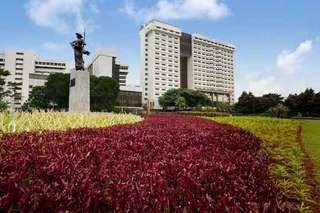

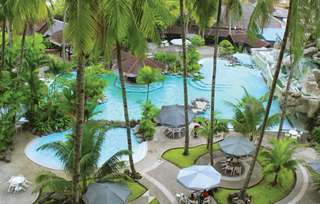

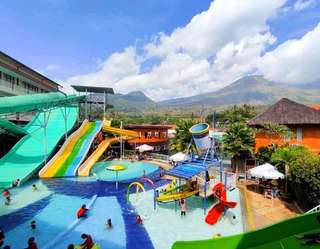




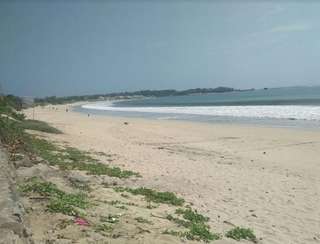

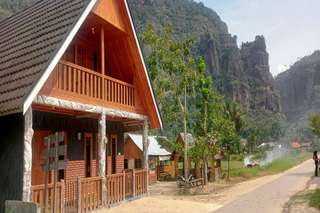

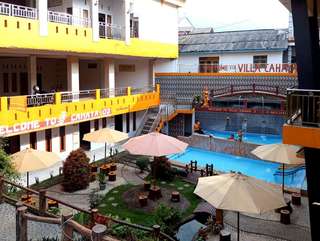

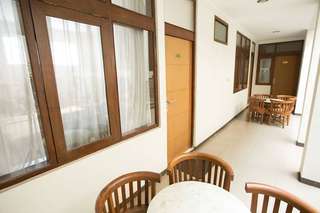




 Facebook
Facebook Instagram
Instagram TikTok
TikTok Youtube
Youtube Twitter
Twitter Telegram
Telegram WhatsApp
WhatsApp
